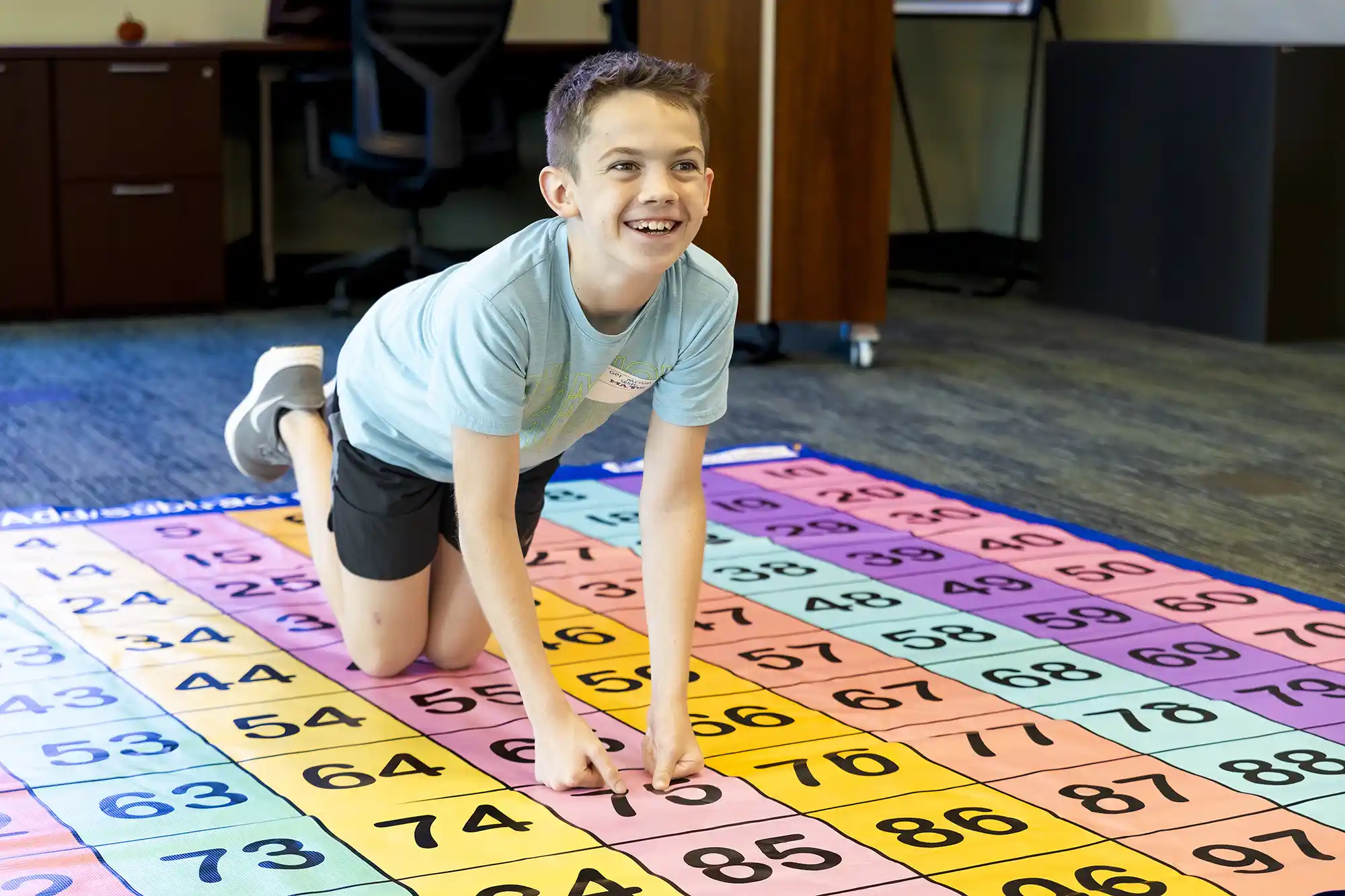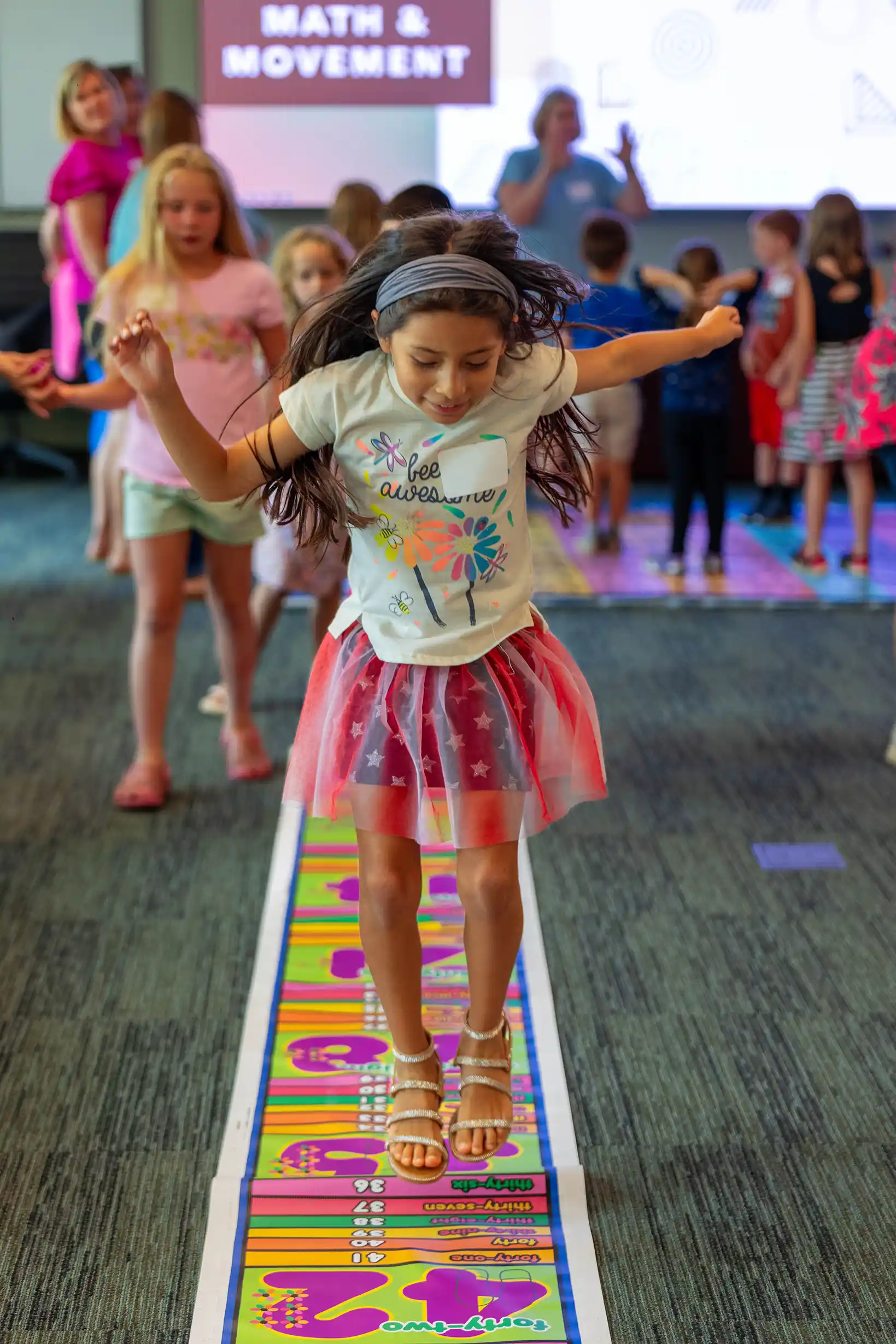
Math: it can be a dreaded word for some students, and the teachers tasked with giving those students the building blocks in the subject they’ll need to succeed. Regardless of a child’s proficiency in math, every student benefits from a learning environment that invites them to flex more muscles than their brain.
Enter Math and Movement, the day-long course that teaches children math in the most recreational of senses. The course had two sessions, both held in the classroom of ORAU’s MC-100 building. One session was with rising first through third graders, and the other rising fourth through sixth. Both saw students engaged in a variety of games, indoors and outdoors, centered around math concepts and problems appropriate for the respective age groups.

Before students arrived, teachers from various schools were taught Math and Movement, which offers several ways to incorporate physical activity into math instruction to spruce up the curriculum. Who knew hopscotch was such an effective way to get children to learn their times tables?
For teachers, the struggle can come with reducing the stigma and anxieties related to math. For most, engagement is the name of the game and finding ways to make children forget that they are learning is always a home run.
“If you can make something that is fun and engaging, and there is a feeling of trust with the kids, and some that math anxiety can just kind of ebb away, they will be more likely to engage in other math when it has to be math on pencil and paper,” said Kathleen Dorman, a second grade teacher at St. John Neuman School in Farragut.
Once class starts to feel like recess, that association can do wonders for a student who may struggle in certain subjects. If playing can become learning, the more learning can start to feel like playing. One third grader struggled in math, but saw a new leaf turned when she realized that not all learning has to be intimidating.
“Moving around gets the stress out of you and lets you have fun,” said Catherine Heller, a third grader at St. John Neuman School. “Normally at school we just sit at our desk and work, which is kind of stressful. This is different because you get to learn and have a good time.”
While learning math can be stressful for young students, a rough start in the subject undoubtedly leads to bigger struggles in academia down the road. While not all learning can be as fun as this, hopefully Math and Movement was able to give teachers the tools and their students the confidence they need to see each other succeed.